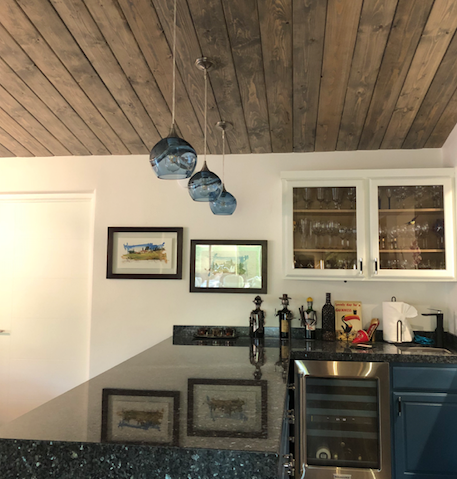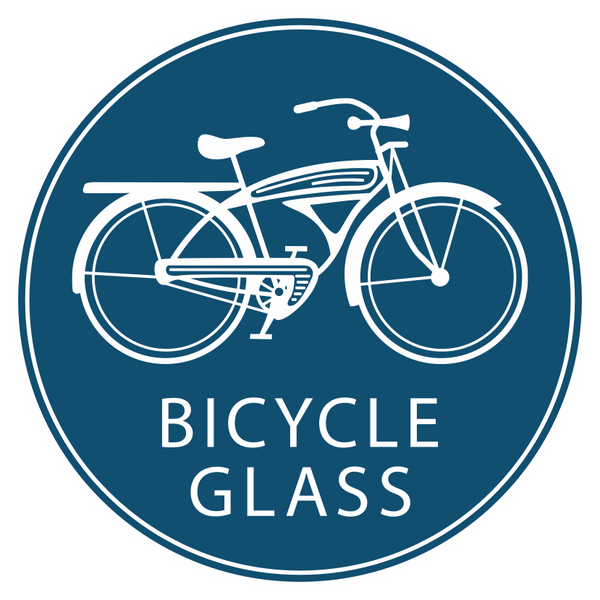
Creative Lighting Options for Home Bars
If you enjoy entertaining and welcoming guests into your home, chances are you’ve considered building a home bar. These customizable home additions are a wonderful way to build your knowledge of various spirits while partaking in and showing off your extensive drink collection. But the drinks themselves aren’t the only factor that goes into building your own personal home bar. In fact, the lighting might just be the most important characteristic.
The biggest differentiating factor between a home liquor cabinet and a home bar is atmosphere. While you have the power to pour a drink at any time, it doesn’t quite have the same vibe as sipping a cold one on a barstool. It’s for this reason that lighting is crucial to creating a home bar and why you should think about the lighting throughout your project. To ensure that this transformation is successful, ponder a few creative lighting options for home bars and find the one that best suits your needs and tastes.
Integrated Structural Lighting
If unique and eye-catching architecture speaks to your style sensibility, then this might be the route you want to pursue with your bar lighting. Unlike the classic bar setting that demonstrates directed lighting to emphasize the bar, structural lighting is controlled by the shape of the room and the architecture it illustrates. Typically, these types of lights are built into the surrounding architecture, allowing you to light the room at various angles in unique ways. In bars that utilize this lighting, the area is primarily lit by angled walls and ceilings infused with vivid LED lights. This provides the room with a very intriguing appearance and atmosphere. By using this type of lighting, you’re also free to incorporate more traditional lighting as well.
Recessed Lighting
Unfortunately, not every homeowner has the space for a large, elaborate home bar. So, they typically need to get a bit more creative with how they light their space. It’s for this reason that many home bars utilize recessed lighting systems. Planted deeper into a surface than a standard lighting fixture, this lighting is often used to illuminate a specific area by funneling directed light downwards at a countertop. This not only makes that specific area stand out against the rest of the room, but also provides focused light in an area where you’ll be working—or in this case, making drinks. The best part is, while recessed lighting is most often used in ceilings, they can be installed in any portion of the room that’s thick enough for the mount. This allows you more creativity with your lighting design as they can also be used in walls, counters, and even cabinets.
Cable Lighting
For those looking for a greater number of custom lighting options, cable lighting is certainly one to consider. Consisting of several conductive tension cables lined with several lighting fixtures, these systems allow you to switch out designs and customize layouts as you see fit. The cables themselves run in parallel lines below the ceiling, and the fixtures of choice are strung along those lines at various angles. This allows these systems to offer all forms of ambient and decorative lighting from a series of directions. However, unlike other methods of lighting, it’s recommended that cable lights are only fixed to the ceiling to avoid direct contact with skin. Since the electrical current runs through these wires rather than insulated cords, there’s a higher shock risk upon contact.
Chandelier or Pendant Lighting
Another type of creative lighting option for home bars is to lower the lighting source with chandelier or pendant fixtures. These suspended lighting systems add an extra layer of class to a bar by supplying it with the directed lighting it needs while also adding an eye-catching decorative piece. This method is both practical as well as stylish. Since there are various shapes, designs, and lighting styles to choose from, it’s easy to find the right fixtures for the look you want. Additionally, depending on the shape of the fixture you choose, your pendant or chandelier lighting can also cover a larger area than many other downlighting options. Other types of chandeliers even offer upward-facing light that will cover even more space if you so choose.
Linear Lighting
Like cable lighting, the electrical current also runs along a wire system. However, what distinguishes these two lighting methods are the lights themselves. While cable lighting requires that separate lighting fixtures are attached to the electrified wires, linear lighting involves the wires themselves lighting up. This lighting method is designed to distribute light evenly over narrow areas—something that traditional lighting can’t accomplish. Overall, it allows a homeowner to properly illuminate the areas they need to, despite their room’s inconvenient shape. Additionally, unlike cable lighting, linear lighting cords run parallel to each other across the ceiling to ensure that each section of the room receives the same amount of light.
Wall Sconce Lighting
On the other hand, if you’d like to light up specific areas of the room without illuminating the entire space, wall sconces work very well. Attached to the walls at either end of a focus area, these fixtures provide just enough accent light to work by without oversaturating an area with direct light. This allows you to keep the classic, dimly lit bar atmosphere without sacrificing your ability to see or do work. Because these lighting systems use less energy overall, they can also help save on your electricity bills and leave you more funds for other home projects.
When you’re trying to recreate an experience in your own home, atmosphere is everything. That’s why, at Bicycle Glass Co., we strive to provide homeowners with the tools and products to turn their vision into a reality. With our collection of hand-blown pendant lights and chandeliers, you’re sure to find the perfect products to illuminate your home bar. As a result, you won’t just create a home bar—you’ll craft an experience for yourself and all your guests to enjoy without having to even walk out the front door.

